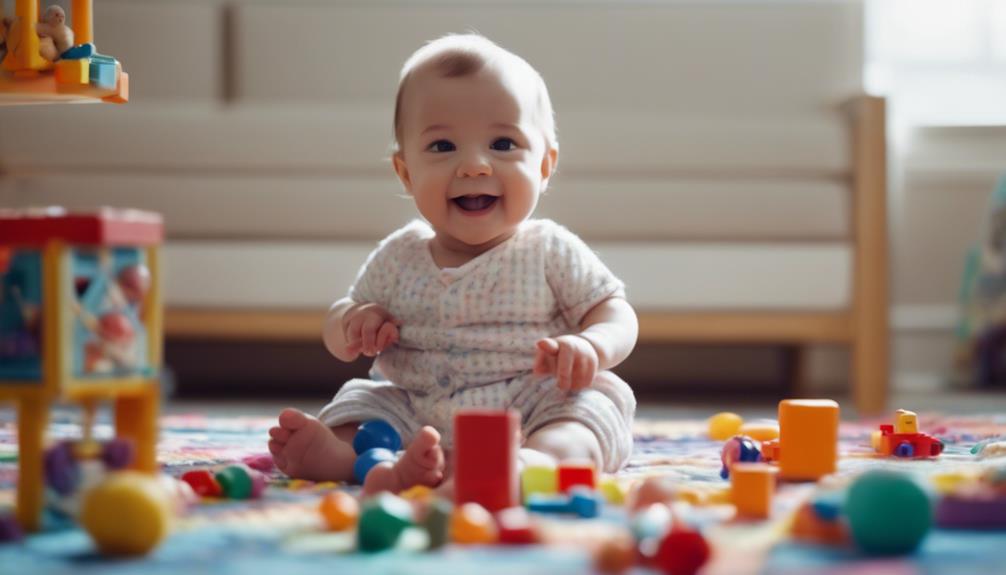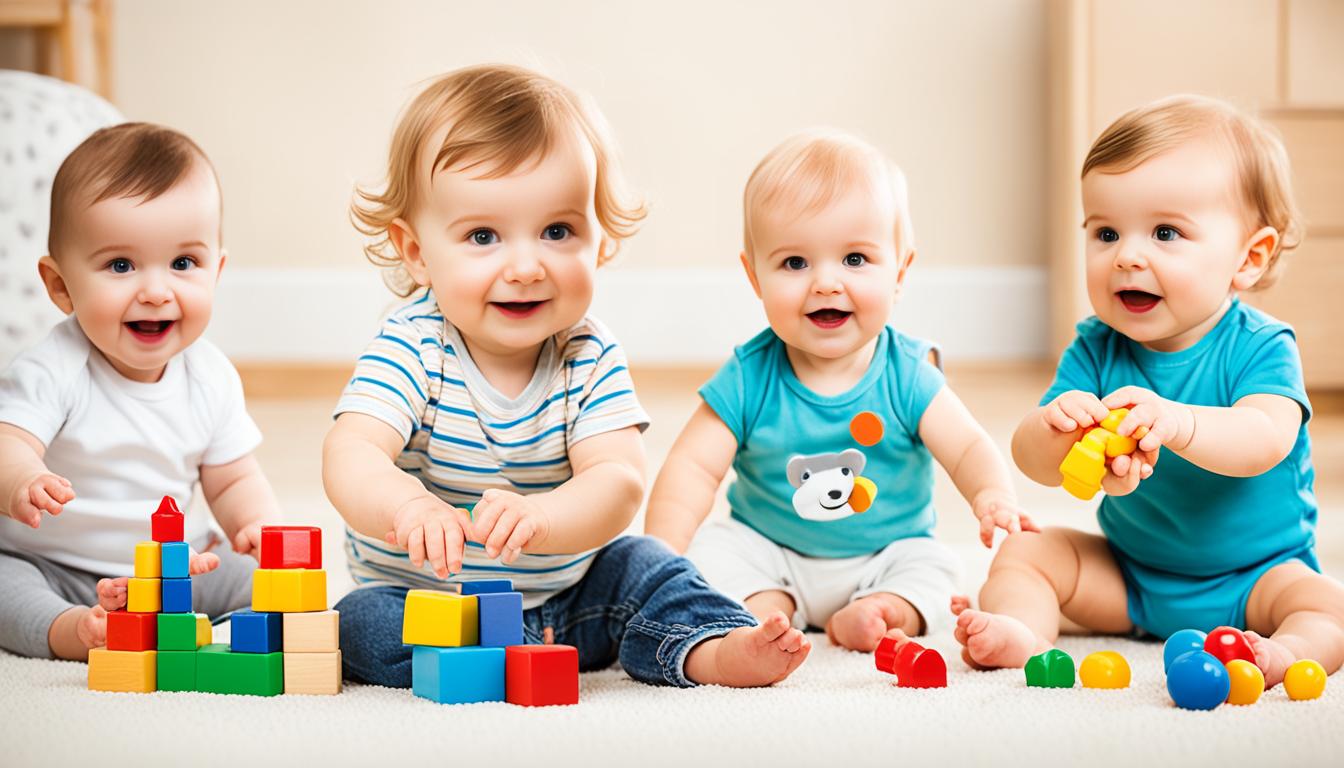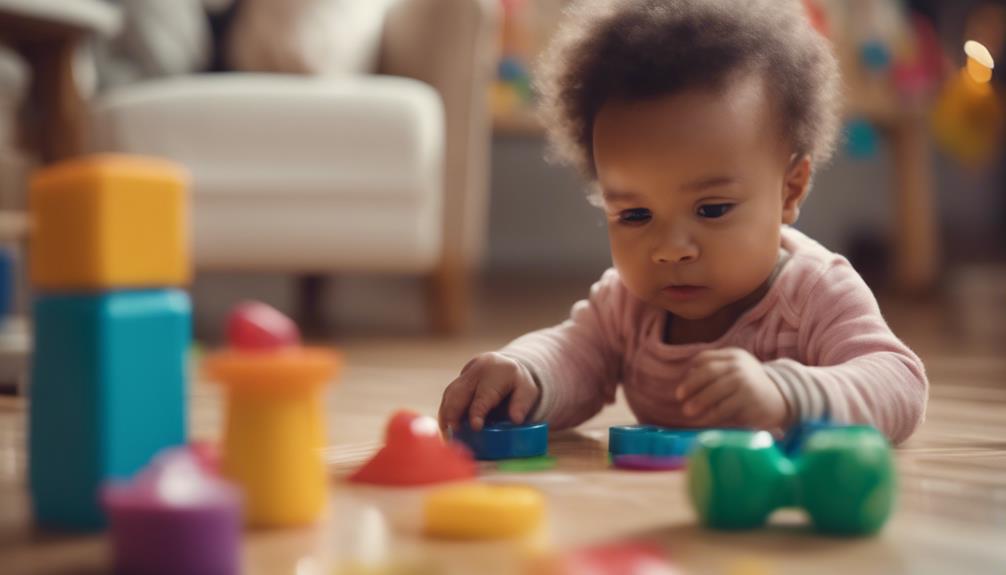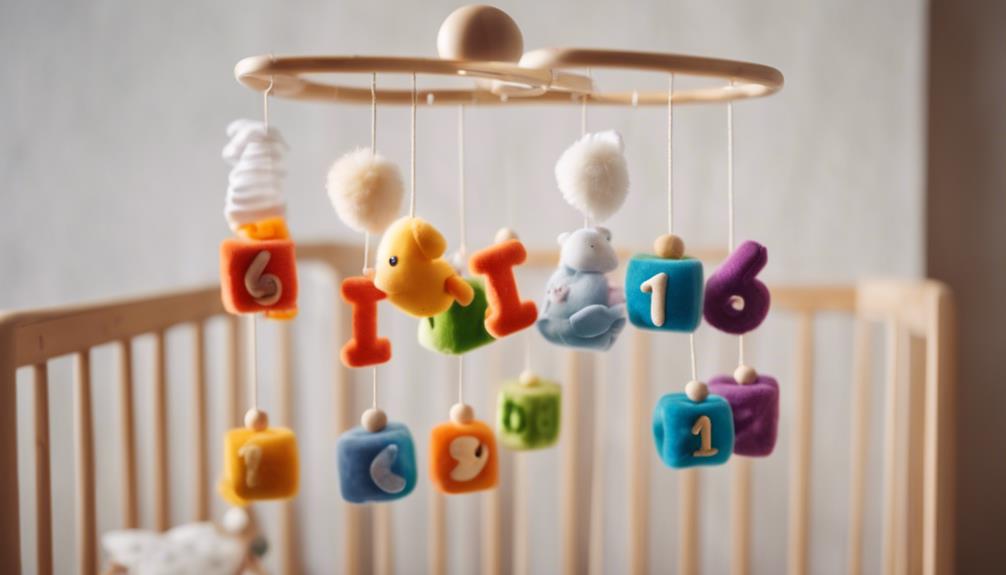Developing early communication skills in babies is crucial for their social and language development. Social interactions, gestures, and sounds are fundamental for language growth. Encouraging a baby’s vocalizations and responding to their cues can improve their language abilities. Caregivers play a vital role in fostering these skills by creating a nurturing environment. Recognizing milestones such as eye contact and responsiveness to sounds helps track progress. By establishing a language-rich environment and participating in interactive activities, you lay the groundwork for future communication skills. Delving deeper into these areas will provide further valuable insights for your baby’s growth.
Key Takeaways
- Encourage babbling to promote early communication skills.
- Utilize gestures and eye contact for language support.
- Create a language-rich environment with music and rhymes.
- Tailor communication practices to developmental stages.
- Respond to sounds and encourage babbling for language development.
Importance of Early Social Interactions
Early social interactions with caregivers are essential for babies to develop their communication skills effectively. During these interactions, babies learn to communicate through gestures, sounds, facial expressions, and movements.
By engaging in social interactions from an early age, infants can recognize and respond to communication cues in their environment. This early communication is important for their overall language development and sets a strong foundation for future interactions.
Caregivers play an important role in providing a nurturing and responsive environment for babies to enhance their communication skills. Through positive interactions with caregivers, babies feel supported and encouraged to explore different ways of expressing themselves.
These interactions not only foster the child's ability to communicate effectively but also create a strong bond between the caregiver and the baby, which is essential for healthy child development.
Therefore, early social interactions with caregivers are instrumental in shaping a child's communication skills and overall well-being.
Building Blocks of Language Development
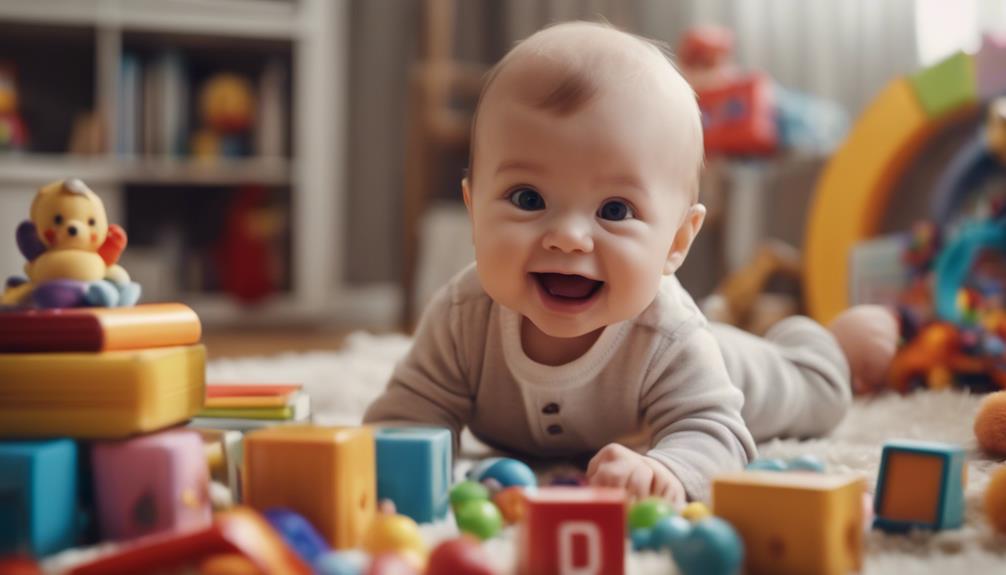
When it comes to language development in babies, early vocalizations play a pivotal role in laying the foundation for communication.
Gestures and cues are also essential building blocks as they help infants express their needs and emotions before they can speak.
Responsive caregiver interactions further enhance a child's language skills by providing a supportive and engaging environment for learning.
Early Vocalizations Importance
Developing early communication skills in babies hinges greatly on understanding the importance of their early vocalizations as fundamental building blocks of language development.
From the moment babies start cooing and babbling, they're laying the foundation for their future speech and communication abilities.
These early vocalizations aren't just adorable sounds but vital indicators of language development progress.
By encouraging and responding to a baby's early vocalizations, you actively support their communication skills growth.
Paying attention to how your baby progresses from simple sounds to meaningful words is key to monitoring their language development journey.
Remember, every coo, babble, and sound imitation is a significant step towards your baby becoming a proficient communicator.
Gestures and Cues
Understanding a baby's early gestures and cues is key in laying the foundation for their language development journey. Infants rely on gestures like pointing, waving, and reaching to communicate their needs and feelings. Additionally, cues such as eye contact, facial expressions, and body movements play an essential role in conveying their emotions. By recognizing and responding to these gestures and cues, caregivers can help infants build strong communication skills from an early age. These gestures and cues serve as the building blocks for language development in infants and toddlers, setting the stage for future linguistic abilities. Encouraging and interpreting a baby's gestures fosters early social interaction and enhances language acquisition. Below is a table highlighting the significance of gestures and cues in the development of communication skills and language in infants:
| Importance of Gestures and Cues |
|---|
| – Foundation for language development |
| – Facilitate social interaction |
| – Convey needs and emotions effectively |
| – Enhance communication skills |
Responsive Caregiver Interactions
Responsive caregiver interactions form the cornerstone of a child's language development journey. Engaging with your child through these interactions is essential for nurturing their communication skills.
When you promptly and positively respond to your child's cues, you're actively helping in their language development. By interacting with your baby, they learn how to communicate effectively, laying the foundation for their language skills.
Encouraging back-and-forth exchanges with your infant not only strengthens your bond but also aids in their language development. Remember, your responsiveness plays a significant role in how well your child acquires language.
Recognizing Gestures and Facial Expressions
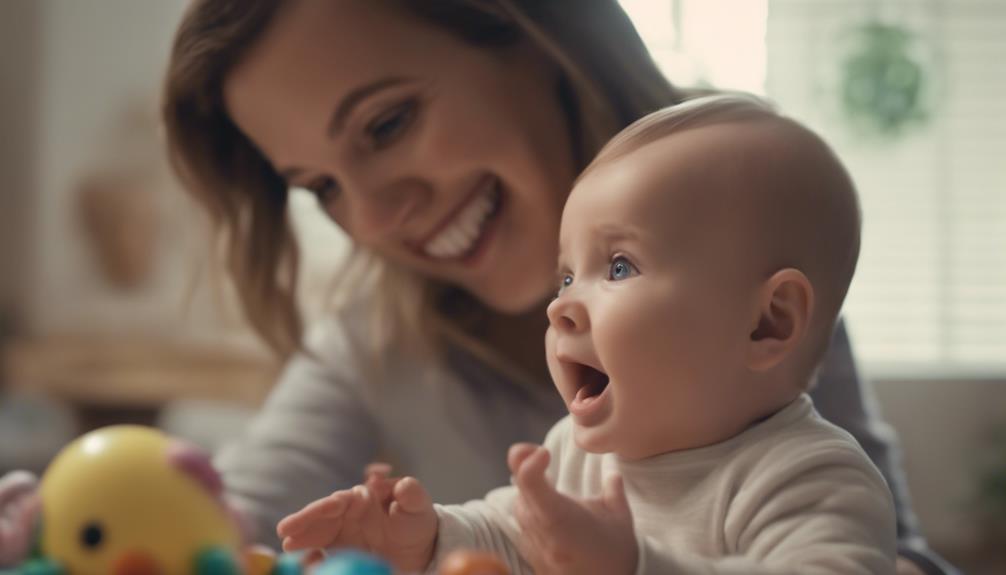
To effectively communicate with a baby, it's essential to keenly observe and interpret their gestures and facial expressions. Infants utilize a variety of nonverbal cues such as facial expressions, gestures, and body language to convey their needs and emotions.
By recognizing a baby's smiles, frowns, eye contact, and hand movements, caregivers can gain insight into the baby's feelings and intentions. For instance, babies may use gestures like pointing, waving, or nodding to express approval, understanding, or refusal.
Paying close attention to these communication cues helps in interpreting the baby's messages accurately. Understanding and responding to a baby's nonverbal cues not only aids in effective communication but also plays an important role in strengthening the caregiver-child bond.
Responding to Sounds and Cues
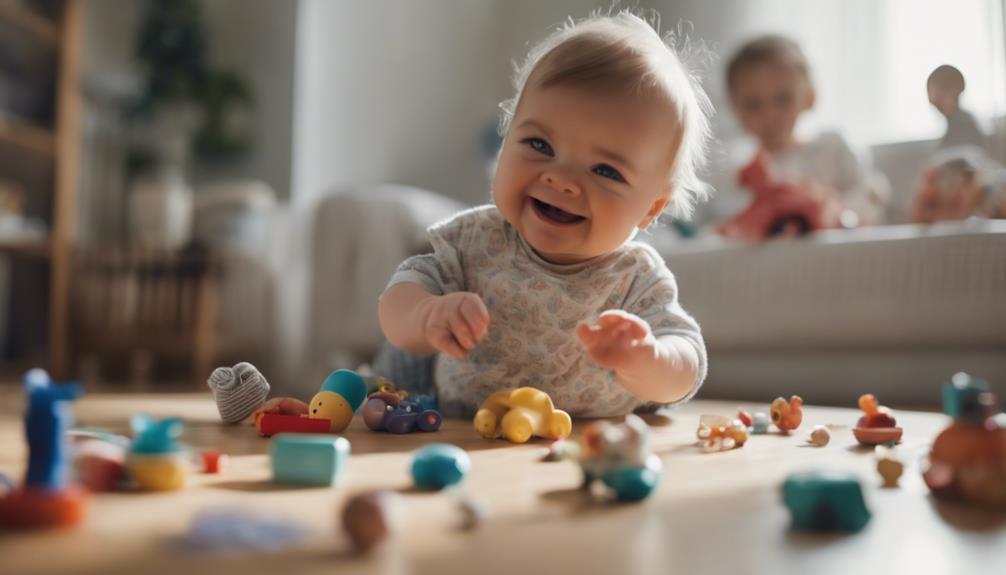
When interacting with your baby, pay close attention to their sounds and cues as these are their way of communicating with you.
By mimicking the sounds your baby makes naturally, you encourage them to continue vocalizing and engaging with you.
Responding to your baby's cues not only strengthens your bond but also lays a solid groundwork for their future communication skills.
Listening for Cues
By attentively tuning in to your baby's sounds and cues, you can establish a strong foundation for effective communication and bonding. Babies communicate through a variety of cues, such as cooing, crying, and gestures, to express their needs and interact with caregivers. It's important to respond promptly to these cues as it fosters trust and strengthens the caregiver-child bond.
Paying close attention to and interpreting your baby's cues effectively not only supports early communication development but also lays the groundwork for future language and communication skills.
Understanding and responding to your baby's cues not only create a positive environment for their social and emotional development but also help in building a solid foundation for their overall well-being. By listening for cues and responding appropriately, you're actively contributing to your baby's early communication skills and setting the stage for a strong and healthy relationship based on attentive and responsive caregiving.
Mimicking Sounds Naturally
As your baby naturally mimics sounds they hear, they're laying the foundation for developing essential communication skills. Responding to a baby's sounds and cues is essential in fostering their early interaction and communication development. Here's why this natural process is important:
- Building Blocks: Mimicking sounds serves as the building blocks for your baby's communication skills.
- Understanding Gestures: Pay attention to your baby's gestures when they mimic sounds to grasp their attempts at communication.
- Encouraging Engagement: By responding to your baby's sounds, you encourage them to engage further in social communication.
- Nurturing Development: Early interaction through mimicking sounds nurtures your baby's understanding of communication basics, aiding in their overall development.
Encouraging Vocal Responses
Encourage your baby's early communication development by actively responding to their vocal sounds and cues. Infants begin to develop their communication skills by reacting to the sounds and cues provided by caregivers. By encouraging vocal responses in babies, caregivers play an essential role in helping the child develop early language abilities.
When you respond positively to your baby's cooing and babbling, you're reinforcing their attempts at communication and fostering further interaction. Acknowledging and responding to your baby's vocalizations not only strengthens their communication skills but also lays the groundwork for future language development and social interaction.
Caregiver's Role in Social Development

Your role as a caregiver is pivotal in shaping your child's social development through responsive interactions and nurturing environments. By engaging in positive caregiver-child interactions, you lay the foundation for your child's social competence and emotional well-being.
Here are some key points to keep in mind:
- Responsive Caregiving: Promptly responding to your child's cues and needs is essential for fostering early communication skills.
- Language Development: Modeling appropriate language and communication behaviors helps in promoting language development in infants and toddlers.
- Secure Attachment Relationship: Establishing a secure attachment relationship with your child contributes significantly to their social development and overall well-being.
- Social Competence: Encouraging social interactions and providing opportunities for social engagement can enhance your child's social skills and confidence.
Nurturing Communication Skills in Babies
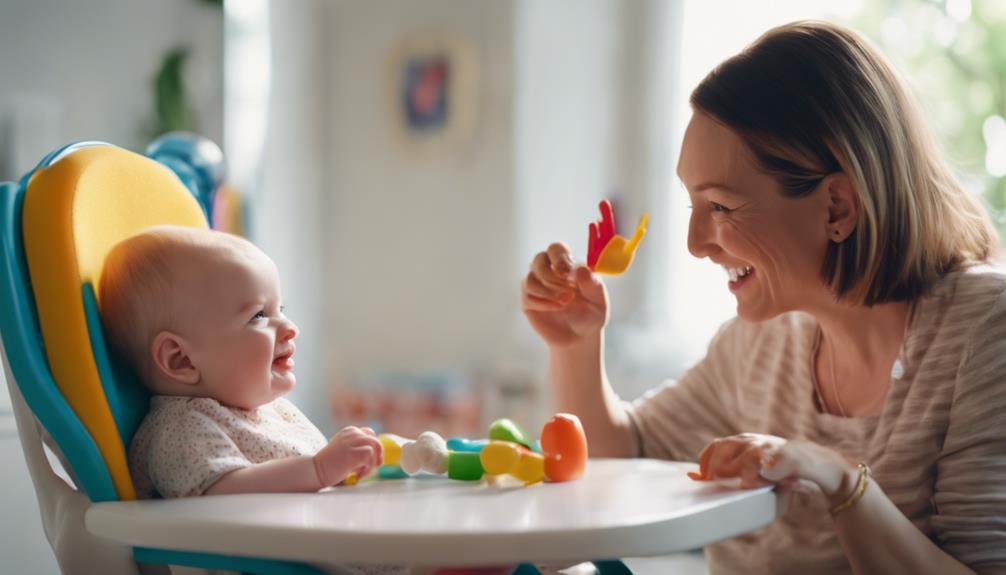
Through daily interactions and engaging activities, caregivers can foster the development of early communication skills in babies.
Responding to your child's communication efforts is essential in supporting their language and communication development. When babies gesture, make sounds, or show facial expressions, acknowledging and reciprocating these cues help them understand the basics of communication.
By reading, talking, and participating in everyday routines with your little one, you create opportunities for them to practice and enhance their communication skills.
Support your child's communication milestones by being attentive and responsive. Recognizing and responding to their efforts early on can greatly impact their quick skill development. Tracking these milestones allows you to gauge your child's progress and provide appropriate support as needed.
Understanding Baby's Social Milestones
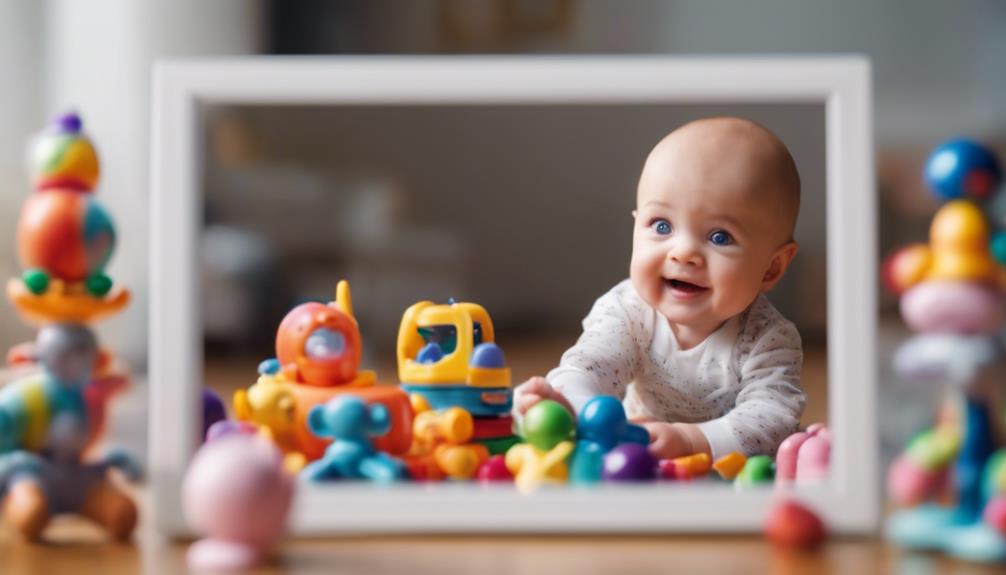
Understanding your baby's social milestones is essential for fostering healthy communication development from an early age. These milestones are vital in your child's development as they set the groundwork for future communication skills.
Here are some important social milestones to look out for:
- Responding to Sounds: By 3 months, your baby should start reacting to noises and voices around them, showing their early ability to engage socially.
- Making Cooing Sounds: Around the same age, your baby may begin to make adorable cooing sounds, indicating their interest in communication.
- Engaging in Eye Contact: As your baby grows, they should start making eye contact with you and others, a key element in social interaction.
- Showing Interest in Interactions: Babies typically show curiosity in interactions, smiling at people and displaying interest in engaging with their surroundings, laying the foundation for future social skills.
Recognizing and nurturing these early communication milestones will greatly benefit your child's development in the long run.
Tips for Enhancing Early Communication
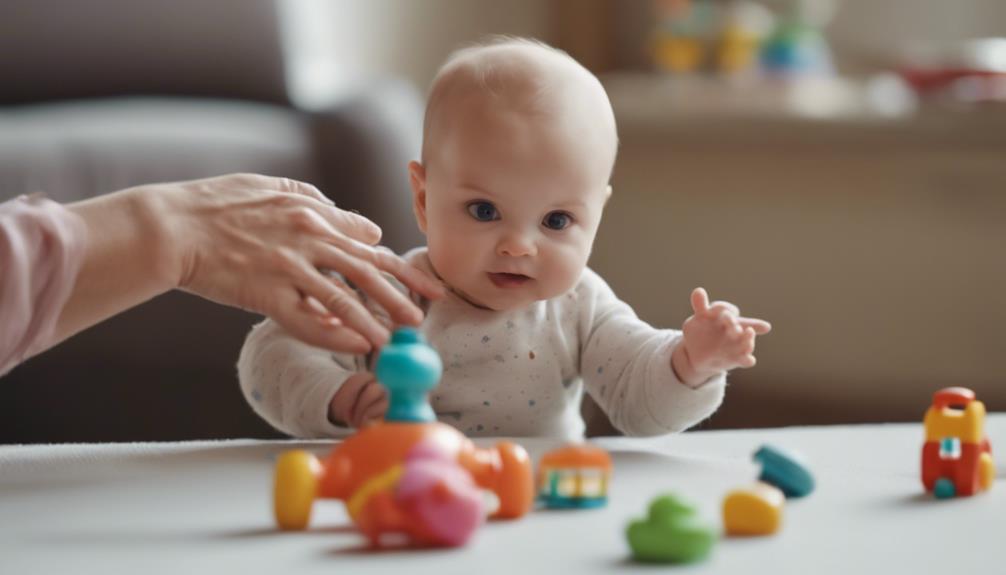
Enhancing early communication skills in babies can be achieved through engaging in responsive interactions and daily reading. By encouraging babbling, imitating your child's sounds, and utilizing gestures and eye contact, you can support their language acquisition. Creating a language-rich environment with music, nursery rhymes, and conversation further aids in their communication development. Below are some practical tips to help develop your child's communication skills:
| Age | Language and Communication Milestones | Early Intervention |
|---|---|---|
| 0-6 months | Begins cooing and making vowel sounds | Respond to their sounds with smiles and verbal responses |
| 6-12 months | Starts babbling and imitating sounds | Encourage babbling through back-and-forth interactions |
| 1-2 years | Uses simple words and gestures | Expand vocabulary by labeling objects and actions |
| 2-3 years | Forms short sentences and engages in simple conversations | Foster communication by asking open-ended questions |
Support your child's communication journey through these practices tailored to their developmental stages.
Supporting Future Communication Abilities
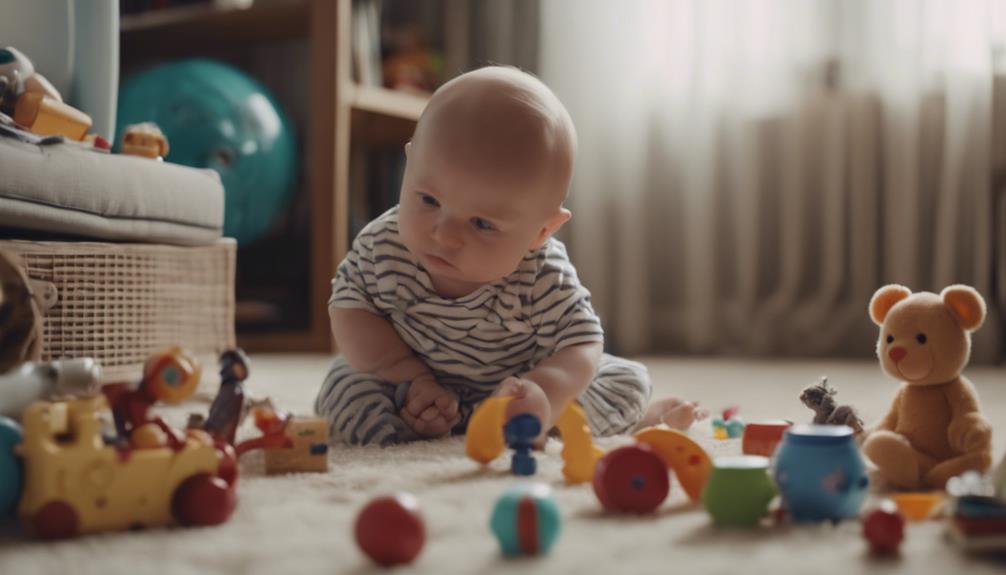
To prepare your child for future communication success, it's essential to continue nurturing their early language development through responsive interactions and engaging social experiences. By supporting your child's development of communication from early childhood, you can help set a strong foundation for their future language skills.
Here are some key ways to support your child's communication abilities:
- Respond to Your Child's Cues: Pay attention to your baby's sounds, gestures, and facial expressions, and respond promptly and enthusiastically to encourage further communication attempts.
- Engage in Interactive Conversations: Have meaningful conversations with your child, even if they're too young to speak back. This helps them learn the rhythm and flow of conversation.
- Read and Tell Stories: Reading books and telling stories to your child fosters language development and enhances their storytelling abilities.
- Encourage Social Interactions: Arrange playdates, attend parent-child classes, and engage in activities that promote social interactions, as these experiences are vital for developing communication skills.
Frequently Asked Questions
What Are the Beginning Stages of Baby Communication?
In the beginning stages of baby communication, you start recognizing familiar voices, making cooing sounds, and responding with smiles. You show interest through eye contact and gestures, setting the foundation for language learning and social interaction.
How Do Babies Develop Communication Skills?
You learn to communicate by babbling, mimicking, and responding to sounds and gestures. Engaging with caregivers and observing facial expressions help you grasp language. Tracking milestones and practicing social interactions are crucial for developing communication skills.
What Are the 4 Ways Infants Communicate?
Infants communicate through sounds, gestures, facial expressions, and body movements. They use these cues to express needs and interact with caregivers. Understanding and responding to these signals is crucial for their development and bonding.
What Is Social Communication in Child Development?
Social communication in child development involves utilizing verbal and non-verbal cues to interact with others. It encompasses skills like turn-taking in conversations, understanding emotions, and interpreting social cues, essential for forming relationships and navigating social interactions.
Conclusion
In the journey of nurturing your baby's social skills, remember that each interaction is like a brick in the foundation of their communication abilities.
Like a delicate dance, your role as a caregiver is vital in guiding them through these early milestones. By recognizing their cues, gestures, and expressions, you're laying the groundwork for future conversations.
Keep supporting and encouraging their development, and watch as they blossom into confident communicators.

